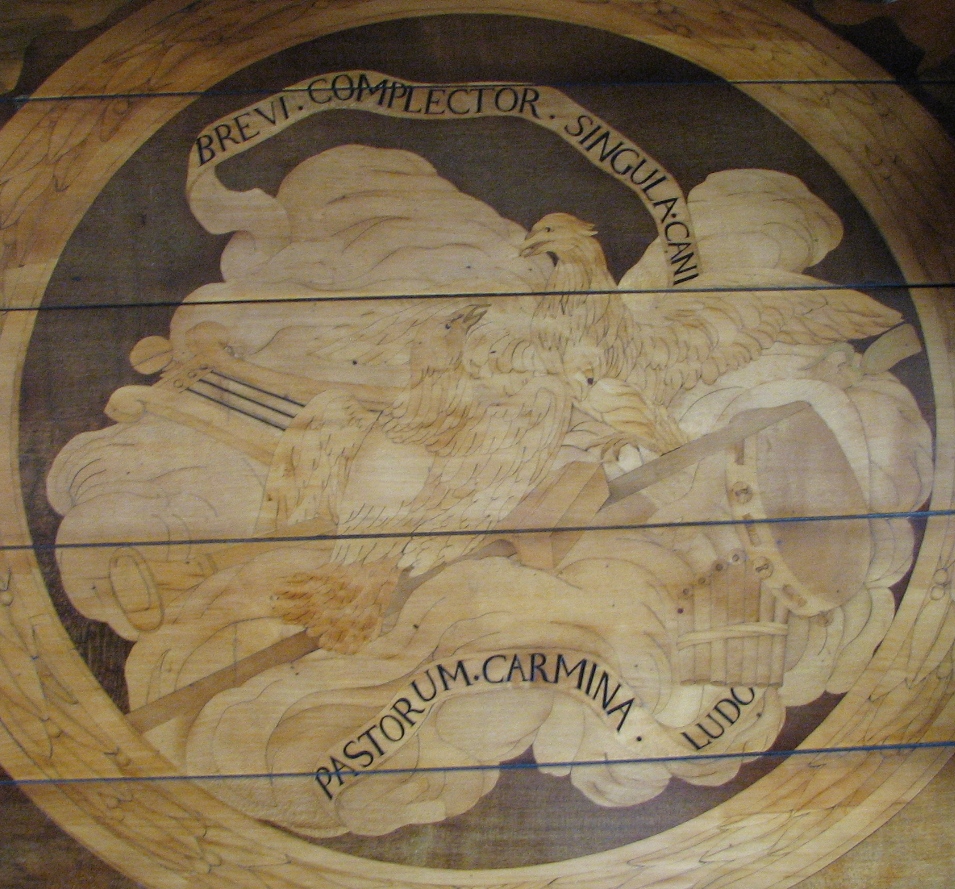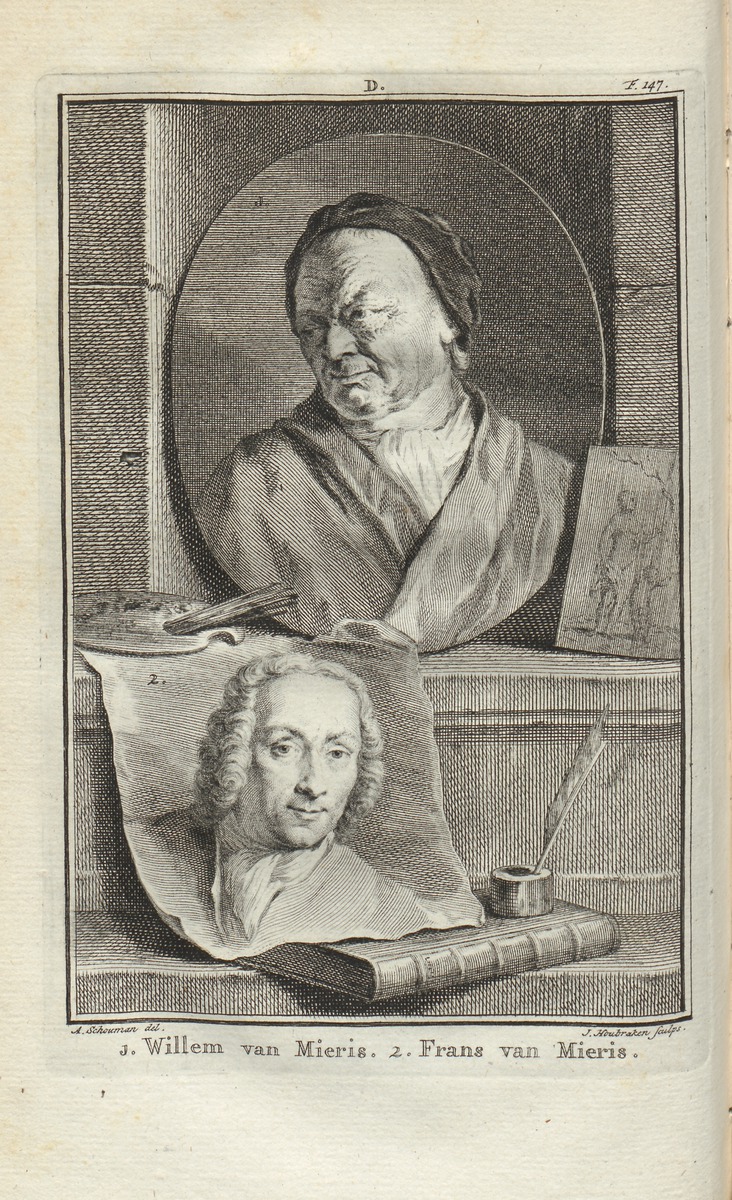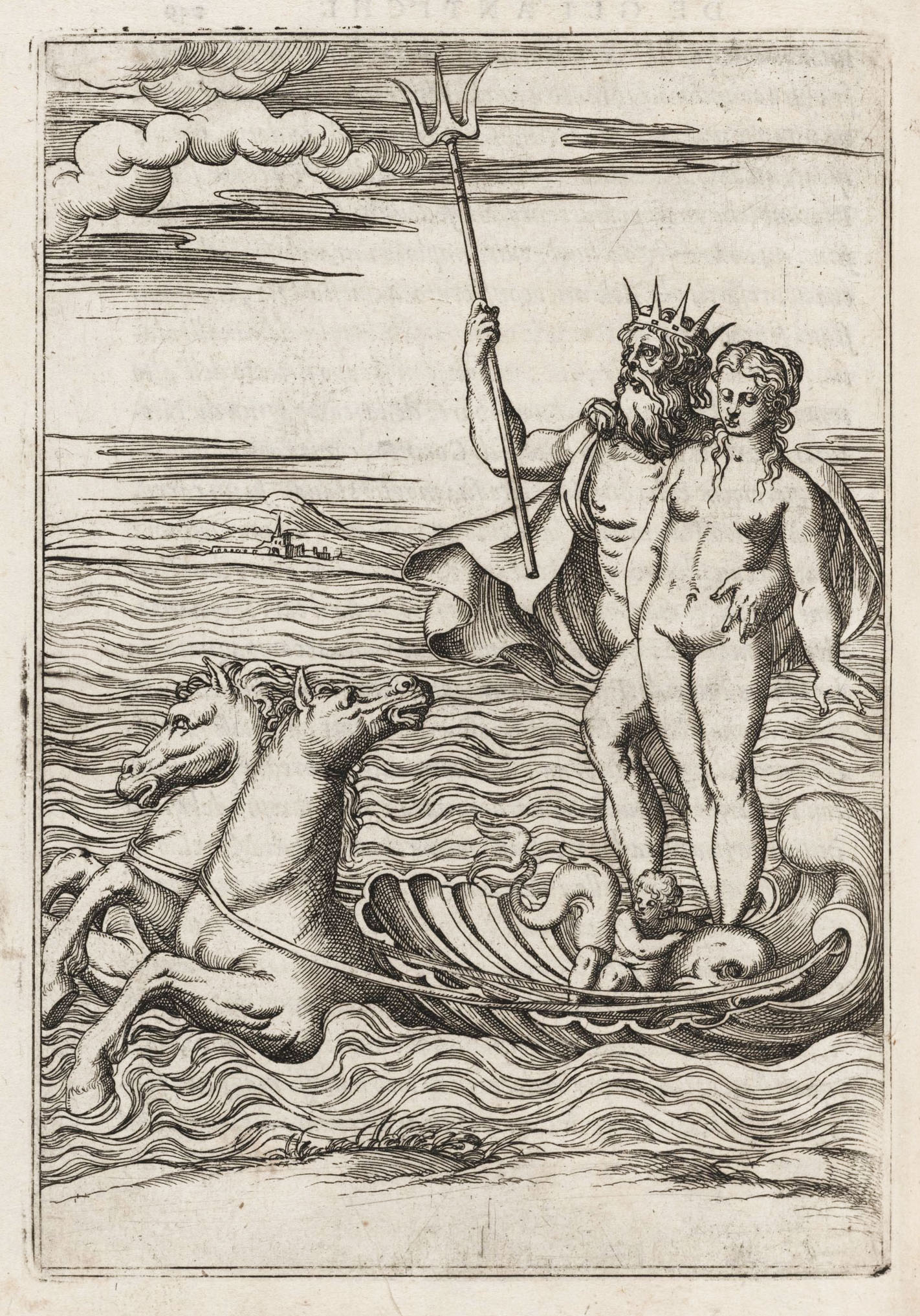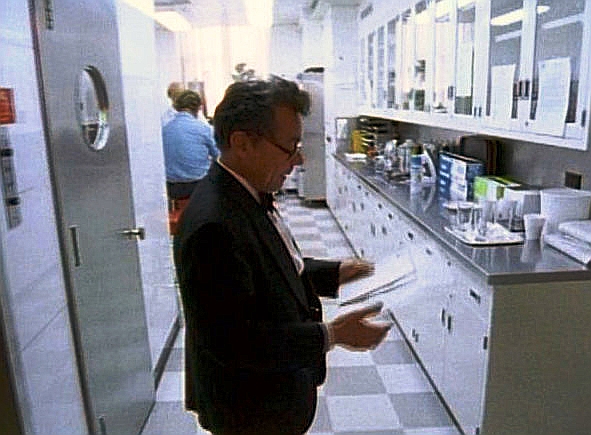|
Iconologia
Cesare Ripa (c. 1555, Perugia – Rome) was an Italian iconographer who worked for Cardinal Anton Maria Salviati as a cook and butler. Life Little is known about his life. He was born of humble origin in Perugia about 1555. The exact date of his birth has never been established. He was very active in academic circles as member of the Filomati and the Intronati in Siena, both dedicated to the study of antiquities and of Greek and Latin literature, and the Insensati in his native Perugia. While still very young he went to Rome to work at the court of Cardinal Antonio Maria Salviati. He attended the Accademia degli Incitati the Accademia di San Luca, where he probably met the Dominican mathematician Ignazio Danti, and was introduced into the learned circles of Baroque Rome. In 1593 he published the first edition (without illustrations) of his ''Iconologia''; the work was highly successful, and went through several editions and subsequent translations. In 1598 Ripa was knighted ... [...More Info...] [...Related Items...] OR: [Wikipedia] [Google] [Baidu] |
Iconography
Iconography, as a branch of art history, studies the identification, description and interpretation of the content of images: the subjects depicted, the particular compositions and details used to do so, and other elements that are distinct from artistic style. The word ''iconography'' comes from the Greek ("image") and ("to write" or ''to draw''). A secondary meaning (based on a non-standard translation of the Greek and Russian equivalent terms) is the production or study of the religious images, called "icons", in the Byzantine and Orthodox Christian tradition (see Icon). This usage is mostly found in works translated from languages such as Greek or Russian, with the correct term being "icon painting". In art history, "an iconography" may also mean a particular depiction of a subject in terms of the content of the image, such as the number of figures used, their placing and gestures. The term is also used in many academic fields other than art history, for example semiotics ... [...More Info...] [...Related Items...] OR: [Wikipedia] [Google] [Baidu] |
Pierio Valeriano Bolzani
Pierio Valeriano (1477–1558), born Giovanni Pietro dalle Fosse, was a prominent Italian Renaissance humanist, specializing in the early study of Egyptian hieroglyphs. His most famous works were ''On the Ill Fortune of Learned Men (De litteratorum infelicitate)'' and ''Hieroglyphica, sive, De sacris Aegyptiorvm literis commentarii'', a study on hieroglyphics and their use in allegory. Early life (1477–1509) Valeriano was born in Belluno, Italy, on 2 February 1477 to a poor family. His father, Lorenzo, was a craftsman who died around 1492, leaving a widow and four children in poverty with a young Valeriano as head of the household. He began his schooling in Belluno at the public school of Giosippo Faustino, a man who Valeriano would later describe as a gifted and talented teacher. Valeriano remembered his schooling fondly, but constantly felt the burden of supporting his family. Around 1493, Valeriano was brought to Venice by his uncle Fra Urbano Bolzanio, a well-connected ... [...More Info...] [...Related Items...] OR: [Wikipedia] [Google] [Baidu] |
Willem Van Mieris
Willem van Mieris (3 June 166226 January 1747) was an 18th-century painter from the Northern Netherlands. Biography Willem van Mieris was a painter, sculptor and etcher active in Leiden. He was born in Leiden and studied under his father Frans van Mieris the Elder (1635–1682), who was a successful genre painter. Willem had a reasonably successful career, being supported by a few patrons who commissioned and collected various of his works. His oeuvre consists mostly of genre and portraiture, with some landscape painting, as well as some sculptures. Van Mieris' style was that of the (painters in the "fine manner"), and his genre works, especially later in his career, depicted scenes from upper-class society. At age 19, Van Mieris took over the family workshop after his father died in 1681, aged 45. He had barely finished his training in the family studio and it would take another two years before he entered the Leiden painters' guild in 1685. He set out to uphold his father's ... [...More Info...] [...Related Items...] OR: [Wikipedia] [Google] [Baidu] |
Gerard De Lairesse
Gerard or Gérard (de) Lairesse (11 September 1641 – June 1711) was a Dutch Golden Age painter and art theorist. His broad range of skills included music, poetry, and theatre. De Lairesse was influenced by the Perugian Cesare Ripa and French classicist painters such as Charles le Brun, Simon Vouet and authors such as Pierre Corneille and Jean Racine. His importance grew in the period following the death of Rembrandt. His treatises on painting and drawing, ''Grondlegginge Ter Teekenkonst'' (1701), Lairesse, Gérard de, ''Grondlegginge ter teekenkonst'' 1701, full digital copy [...More Info...] [...Related Items...] OR: [Wikipedia] [Google] [Baidu] |
Vincenzo Cartari
Vincenzo Cartari (c. 1531 – 1590) was a mythographer, secretary, and diplomat of the Italian Renaissance, studied by Jean Seznec and scholars of the Warburg Institute. Born in Reggio Emilia, he worked for Duke Alfonso II Este and the cardinals Ippolito II and Luigi II Este, in the courts of Ferrara, Venice, Tivoli (Rome), Fontainebleau, and Bruxelles. ''The Images of the Gods of the Ancients'' As the first Italian translator of Ovid's ''I Fasti'', a Latin poem about the gods and religious beliefs of the ancient Romans, Cartari gained a deep knowledge of the classical world and its myths. After publishing the translation and commentary of his ''I Fasti'', in 1551 and 1553, he authored the first mythographic handbook not written in Latin, but in Italian, thereby widening his readership. ''Le Imagini con la sposizione dei dei de gli antichi'' (''The Images of the Gods of the Ancients and their Explanations'') was first published in Venice in 1556, and continuously enriched ... [...More Info...] [...Related Items...] OR: [Wikipedia] [Google] [Baidu] |
Antonio Cavallucci
Antonio Cavallucci (21 August 1752 – 18 November 1795) was an eighteenth-century Italian painter of religious scenes and portraits. Biography Cavallucci was born in Sermoneta in the Lazio. His artistic talents were recognized in an early stage by Francesco Caetani, Duke of Sermoneta in 1738-1810. In 1765, he brought the 13-year-old Cavallucci to Rome, where he became a pupil of Stefano Pozzi and three years later of Gaetano Lapis. by Giovanni Gherardo De Rossi; Venice 1796, page 13. He also studied drawing at the (c. 1769-1771). His earliest work dates from the mid-1760s. It is a |
Perugia
Perugia (, , ; lat, Perusia) is the capital city of Umbria in central Italy, crossed by the River Tiber, and of the province of Perugia. The city is located about north of Rome and southeast of Florence. It covers a high hilltop and part of the valleys around the area. The region of Umbria is bordered by Tuscany, Lazio, and Marche. The history of Perugia goes back to the Etruscan period; Perugia was one of the main Etruscan cities. The city is also known as the University, universities town, with the University of Perugia founded in 1308 (about 34,000 students), the University for Foreigners Perugia, University for Foreigners (5,000 students), and some smaller colleges such as the Academy of Fine Arts "Pietro Vannucci" ( it, Accademia di Belle Arti "Pietro Vannucci") public athenaeum founded in 1573, the Perugia University Institute of Linguistic Mediation for translators and interpreters, the Music Conservatory of Perugia, founded in 1788, and other institutes. Perugia ... [...More Info...] [...Related Items...] OR: [Wikipedia] [Google] [Baidu] |
George Richardson (architect)
George Richardson (1737 or 1738 – c.1813) was a Scottish architectural and decorative draftsman and writer on architecture. Among his few remaining architectural works are two churches built for the Earl of Harborough: Holy Trinity Church, Teigh in Rutland and St Mary Magdalene's Church, Stapleford in Leicestershire. His main output, however, was in the form of books. His publications were subscribed to not only by many leading architects of the day, but also by painters, sculptors and other craftsmen. Selected works *''Book of Ceilings'' (1776) *''Iconology, or, A Collection of Emblematical Figures'' (2 vols., 1779), drawing largely from Cesare Ripa *''Treatise on the Five Orders of Architecture'' (1787) *''New Designs in Architecture'' (1792) See also *Architecture of Scotland The architecture of Scotland includes all human building within the modern borders of Scotland, from the Neolithic era to the present day. The earliest surviving houses go back around 9500 years ... [...More Info...] [...Related Items...] OR: [Wikipedia] [Google] [Baidu] |
Piero Buscaroli
Piero Buscaroli (21 August 1930 – 15 February 2016) was an Italian musicologist, journalist and essayist. Life Born in Imola, the son of a Latinist, Buscaroli studied organ, harmony and counterpoint at the Conservatorio Giovanni Battista Martini, and later he graduated in Law with a thesis about the Italian legal history. From 1955 to 1977, Buscaroli collaborated with the magazine ''Il Borghese'', writing articles of music criticism, international politics and modern history and often using the pseudonym "Hans Sachs". From 1972 to 1975 he was director of the newspaper ''Roma'', and in 1979 he began a long collaboration with the newspaper ''Il Giornale'' directed by Indro Montanelli, where he used the pseudonym Piero Santerno for his not-music-related articles. Buscaroli wrote several books on the history of music, notably ''Bach'' (1985), which got over twenty editions, ''Beethoven'' (2004), a 1350 pages book which was the result of five years of continuous study, and ''L ... [...More Info...] [...Related Items...] OR: [Wikipedia] [Google] [Baidu] |
Anton Maria Salviati
Antonio Maria Salviati (January 21, 1537 – April 26, 1602) was a Republic of Florence, Florentine Roman Catholic cardinal. Biography Salviati was born in Florence, son of Lorenzo Salviati and Costanza Conti, the nephew of cardinals Bernardo Salviati and Giovanni Salviati. His grandmother was Lucrezia de' Medici (1470–1553), Lucrezia de' Medici, sister of pope Leo X and eldest daughter of Lorenzo il Magnifico. In 1561 he was appointed as bishop of Saint-Papoul in France, and later was apostolic nuncio in the same country. Pope Gregory XIII created him as cardinal on December 12, 1583. After becoming Cardinal he went in charge of the Camillians, Ministers to the Sick. Salviati was mostly known for having been a benefactor. In Rome, he refounded the Arcispedale of San Giacomo degli Incurabili (rebuilding the annexed baroque-style San Giacomo in Augusta, Church of San Giacomo in Augusta) and founded the Collegio Salviati at his own expense at the end of 16th century, then he g ... [...More Info...] [...Related Items...] OR: [Wikipedia] [Google] [Baidu] |
Cook (domestic Worker)
A cook or private chef is a household staff member responsible for food preparation. Description The term can refer to the head of kitchen staff in a great house or to the cook-housekeeper, a far less prestigious position involving more physical labour. The cook in an English great house was traditionally female; today's residences may employ a head cook or chef who may be of either gender. The cook is responsible for the preparation of daily meals and menus, as well as menus for parties and other special occasions. The cook is also responsible for the ordering of food, the maintenance of the kitchen and for keeping accounts with local merchants. The holder of the position reports directly to the lady of the house or sometimes to the housekeeper. The cook supervises all kitchen staff. In large households, especially at a noble or royal court, this comprises an elaborate hierarchy, at the bottom of which come the kitchen boys (who, despite the name, were not always minors), in ... [...More Info...] [...Related Items...] OR: [Wikipedia] [Google] [Baidu] |
Butler
A butler is a person who works in a house serving and is a domestic worker in a large household. In great houses, the household is sometimes divided into departments with the butler in charge of the dining room, wine cellar, and pantry. Some also have charge of the entire parlour floor, and housekeepers caring for the entire house and its appearance. A butler is usually male, and in charge of male servants, while a housekeeper is usually a woman, and in charge of female servants. Traditionally, male servants (such as footmen) were better paid and of higher status than female servants. The butler, as the senior male servant, has the highest servant status. He can also sometimes function as a chauffeur. In older houses where the butler is the most senior worker, titles such as '' majordomo'', ''butler administrator'', ''house manager'', ''manservant'', ''staff manager'', '' chief of staff'', ''staff captain'', ''estate manager'', and ''head of household staff'' are sometimes g ... [...More Info...] [...Related Items...] OR: [Wikipedia] [Google] [Baidu] |









